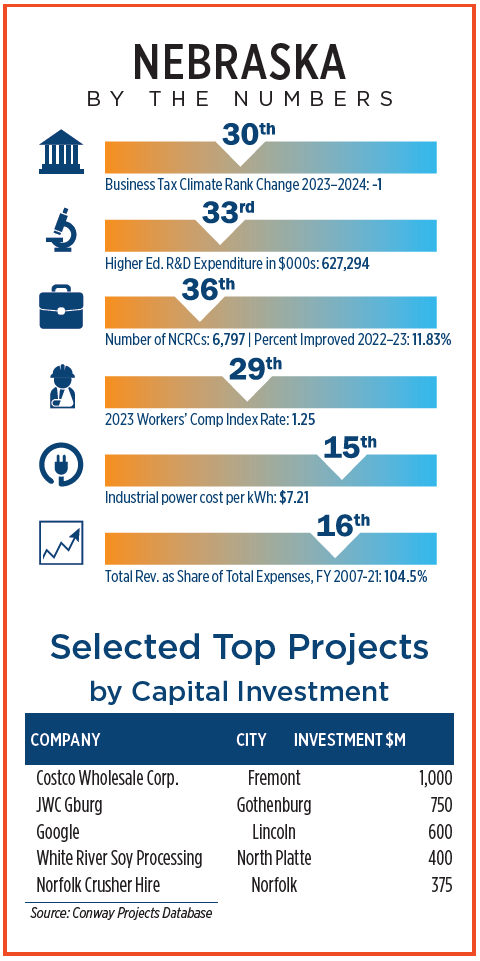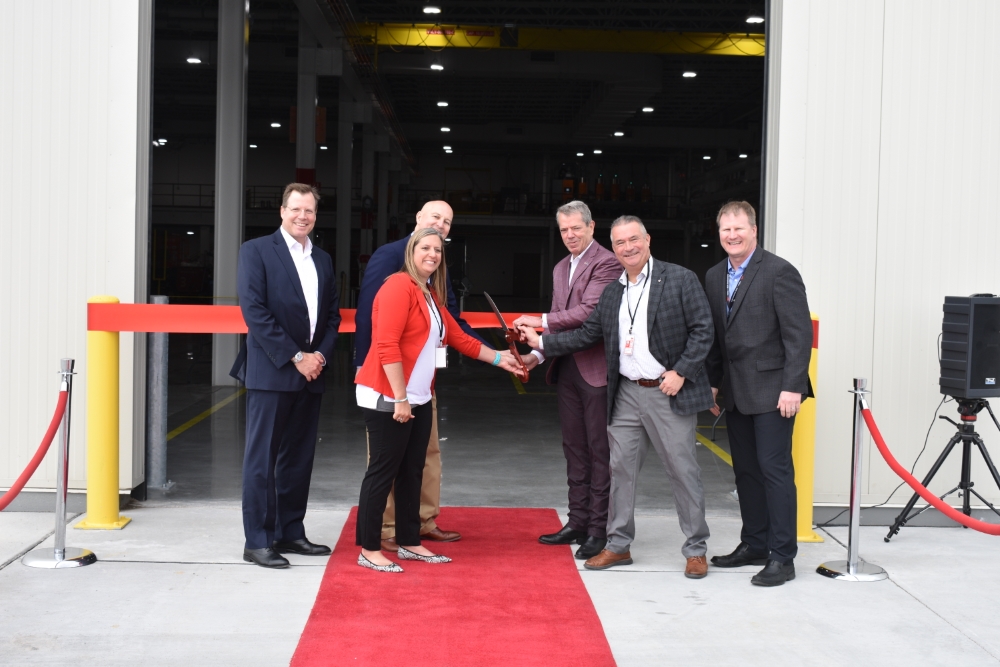Nebraska’s newest incentive program is paying dividends.
3M, the technology and health care giant based in Minnesota, has a lengthy history in Valley, Nebraska, a town of 3,000 people about half an hour west of Omaha. 3M is Valley’s biggest employer, its manufacturing plant there having opened when Jimmy Carter was president. Small wonder, then, that a ribbon-cutting ceremony to mark the facility’s recent expansion drew a stream of high-level dignitaries that included 3M leadership, Nebraska Gov. Jim Pillen, U.S. Senator Pete Ricketts and 2nd district Congressman Don Bacon, all of whose remarks saluted the plant’s valued legacy.
“Forty-five years of age and you’re still growing and still making things happen,” observed Pillen.
3M’s $67 million expansion, completed in May, increased the plant’s footprint by 90,000 sq. ft., thus boosting production capacity for its hand-held respirators, demand for which has surged starting with the COVID-19 pandemic. The plant also produces hearing protection products such as industrial earmuffs. The Valley operation, said Chris Goralski, president of 3M Safety and Industrial, “is essential to our mission to deliver solutions that help protect people worldwide, whether during a crisis like COVID-19 or on the job every day.”

To facilitate the expansion, 3M leveraged the ImagiNE Nebraska Program, a tax incentive-based regime created in 2020 to spur economic growth by providing support for qualifying businesses. As of the Nebraska Department of Economic Development’s most recent report to the state legislature, 50 companies have signed economic development agreements under ImagiNE Nebraska, with combined investments totaling $1.55 billion and projected full-time job creation approaching 2,500.
Mutual of Omaha’s $473 million headquarters project in downtown Omaha is the largest such investment. Others include a $180 million Clean Harbors incinerator project in Kimball (80 new jobs); a $275 million precision fermentation plant in Blair from California-based Perfect Day (70 jobs); and a $267 million expansion of a Novozymes biotech facility, also in Blair (50 jobs).
Getting the Most Out of Corn
Recently cited by Yahoo! Finance as one of the country’s top renewable energy stocks, Omaha-based Green Plains is another promising company to have tapped into ImagiNE Nebraska. In March, the company held a grand opening for a $70 million biofuels production plant in the rural town of York, west of Lincoln, a project also made possible through a partnership with Shell.
“Green Plains,” reported Yahoo!, “is one of the largest biofuel companies in the world, producing nearly 1 billion gallons every year.”
Technology embedded in the company’s new facility was developed with the intent of squeezing added value from every part of the corn kernel, Nebraska being the country’s third-largest corn producer. According to a Green Plains statement, the plant’s advanced capabilities will allow it to extract 100% of a kernel’s renewable oil, about 50% more than current industry maximums. Ethanol produced by the plant could also be used to produce sustainable aviation fuel and renewable diesel fuel, the company believes.
“This is all about adding more value to the corn our Nebraska family farmers are so proficient at producing,” said Devin Mogler, senior vice president of corporate and investor relations at Green Plains.
Development officials in York County express hope that the high-profile investment will serve as a welcome mat for other companies within the surging biofuels industry.
“Green Plains and Shell understand the value of operating in York County,” said Lisa Hurley, director of York County Development Corporation. “As their ventures succeed, we expect others to take notice and decide to bring their operations to our region as well.”
Two More of Note
Founded in 1955 on the plains west of Omaha, the Lindsay Corporation has expanded into a worldwide force in irrigation systems, with manufacturing operations in Europe, Brazil, South Africa and China. This year and next, the company is investing $50 million to expand and modernize its biggest global manufacturing facility, which happens to be in the town from which the company draws its name and original location.
“This investment,” said President and CEO Randy Wood, “will accelerate Lindsay’s ability to bring its latest innovations to market.”
Lindsay’s Smart Pivot, which uses sensors and high-resolution imagery to monitor crop health, is among the new products the plant is to bring to bear. Modernizations, the company says, include advances in data connectivity, analytics, artificial intelligence, automation and robotics.
Expansions such these require all manner of building materials — perhaps most importantly cement — demand for which is an underappreciated barometer of economic vitality. Last spring, Holcim US, the country’s leading cement producer, announced the addition of a $20.5 million storage dome in Fremont, also west of Omaha, to support residential, commercial and industrial growth in Nebraska and beyond.
“Nebraska, Omaha in particular, and nearby Midwest cities are experiencing an influx of construction projects, with new infrastructure being introduced every day,” said Patrick J. Cleary, Holcim’s senior vice president of cement sales. “We’re proud to meet this demand with local operations in one location.”

